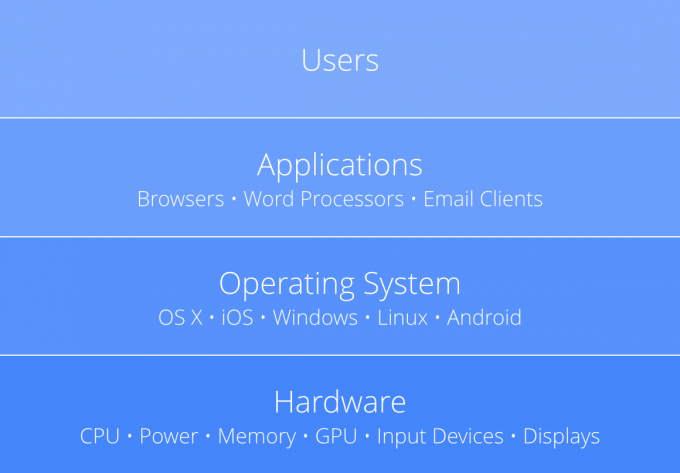
Quality From Start to Finish
There’s something to be said about owning a product’s vision and quality from the very inception to its launch. There are many stages of product development, particularly those that involve hardware, and one thing that seems to be a glaring oversight that has become a slight trend is the integration of hardware and software. In a nutshell of a nutshell you can simply think of a basic computer as having 4 layers. The bottom being the hardware itself including the processor, memory, input devices, etc. After that you have the operating system, traditionally PCs will be running Windows, Macs run OS X, iOS for Apple mobile devices, and Android for a slew of Android hardware manufacturers. Following the OS we have applications that are made for the specific operating system, these are the ones that users are familiar with from word processors, to email clients, to Snapchat, to Photoshop. And finally, there is the user layer, or User Interface, where the application receives input.
If you start to think about how each of these layers work you can easily draw a line from the user interface to the application. Application developers create a user interface that the user will understand, but more importantly, the inputs from that user interface will be easily understood by the application because it was developed together. Let’s then draw a line from the application layer to the operating system. Using Photoshop as an example, Adobe will write a version of their application that can be understood by the Windows operating system as well as a version that can be understood by the OS X operating system. Each operating system has extensive documentation, development best practices, and very good tools to optimize an application for a specific operating system. It is when we try to draw one more line to get down to the hardware level that there is a bit of trouble.
Granted I over-simplified exactly how operating systems work when originally conceptualizing these layers, but there is actually a layer between the operating system and the hardware that is more prevalent on Windows machines than on Apple machines, and that is where device drivers live. Device drivers for PC hardware are released by the hardware manufacturer to do just what the name says, drive the hardware. The Windows operating system relies on these 3rd party manufacturers to create hardware and provide device drivers in order to run. Therein lies a gap in which it becomes very difficult to truly own this product’s vision and quality from start to finish. Apple on the other hand manufactures their own hardware and operating system, and maintains the latest versions of all hardware drivers, all optimized for the hardware that they are very intimately familiar with.
Now, there is an argument for how much of a difference this can provide and the benefits of this kind of optimization are very difficult to properly measure. But we need only to look at another industry in which the benefits of this integration is extremely apparent: video games. Third party video game developers that create cross-platform titles such as the Assassin’s Creed series or the recently released Watch Dogs are typically creating their games using game engines that support multiple operating systems and hardware (PS3, PS4, Xbox 360, Xbox One, Wii, Wii U, etc.). However, first-party studios, as well as exclusive studios such as Naughty Dog for Sony, create their titles specifically for one platform. This may carry a large amount of opinion and subjectivity, but at least to me it becomes very clear that Naughty Dog’s level of expertise with the PS3 platform (both hardware and software) allowed them to create a game, The Last of Us, that technically surpasses any other game of its generation both graphically and cinematically. While we’ll never know what the results would have been if it was a cross-platform title, I’m willing to bet that the integration of hardware and software had a huge benefits towards the final product that shipped.
Even more, first-party and exclusive titles are great examples of these “intangible” benefits and there has been a trend of companies that are now attempting to provide hardware and software integration. Microsoft, with their recently released Surface Pro 3, is essentially the device that Windows 8 was meant to be run on when you consider the significant touch-input integration at the OS-level. Similarly, Samsung has been rumored to release their own mobile operating system in order to be freed of their dependency on Android and have greater control over their entire product.
Having that level of control over the product down to how your hardware performs with the software is how you make the highest quality product possible. I’m not saying it’s impossible to do so without it, but it becomes very difficult to cross the threshold from great to fantastic.
Comments are now closed for this article
Let's just pretend that I have proper "Copyright" on this stuff, but when it comes down to it, feel free to use this however you see fit.
Masoud Majdi - 11 years ago
Although I do not understand the concept of your article precisely, I enjoy reading it tremendously. Maybe I will read it again and I will learn some technical language. I am very proud of you son.